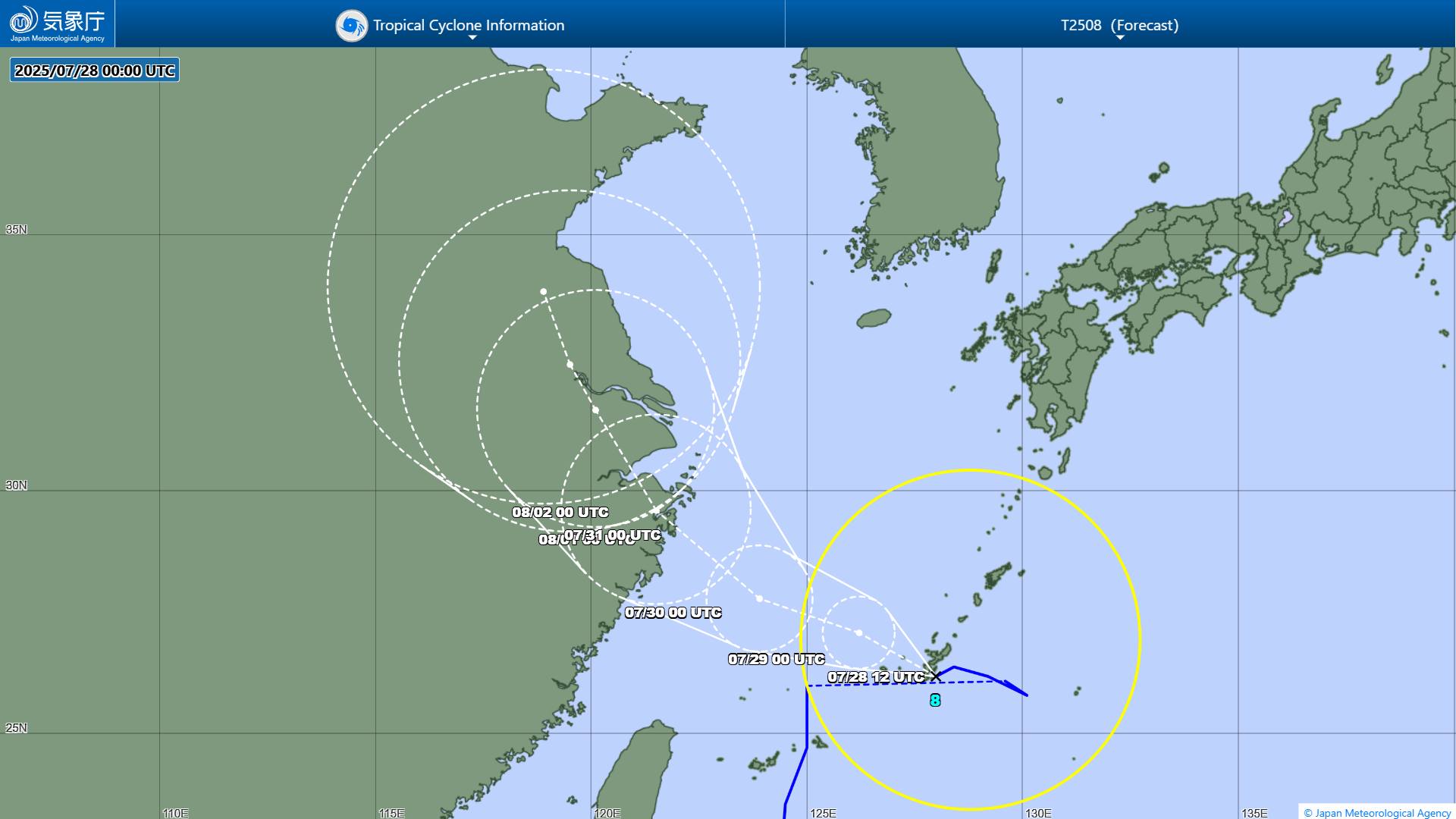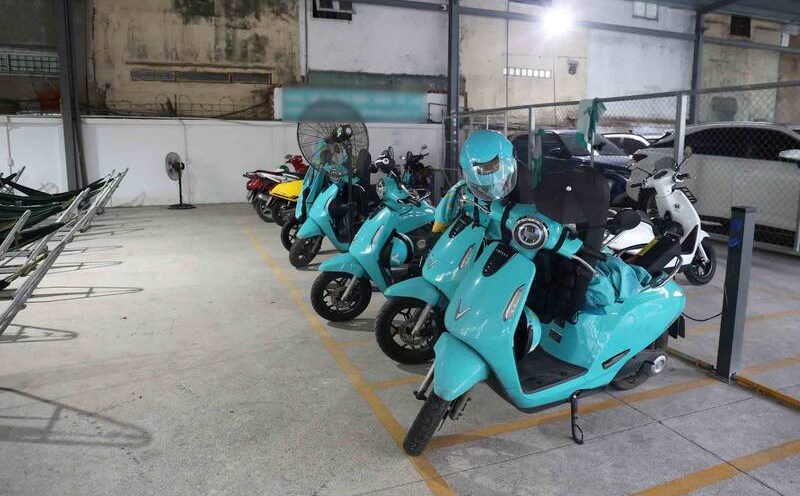According to the latest storm information from the Philippine Atmospheric, Geophysical and Astronomical Services Administration (PAGASA), at 2:00 a.m. on July 28, the center of Comay was at about 26.7 degrees north latitude; 128.3 degrees east longitude, 930km northeast of the northernmost tip of Luzon.
Maximum winds near the center of the storm are 75 km/h, gusting to 115 km/h. The storm is moving northeast at 10 km/h.
Comay is forecast to continue to strengthen and is likely to make landfall in eastern China within the next 48 hours.
According to the Joint Typhoon Warning Center (JTWC) and the Japan Meteorological Agency (JMA), the center of Comay is about 150km east of Japan's Okinawa Island. The storm is almost stuck in the large monsoon circulation west of Okinawa - an area with little direction.
The JMA said that on July 27, Comay (formerly the fourth typhoon in the South China Sea) re-strengthened off Okinawa after weakening into a tropical depression over the weekend. This is the first time since 2018 that a typhoon has been upgraded by the Japan Meteorological Agency after weakening into a tropical depression.
Despite the damaged storm structure, with a clear circulation and a distance from the main thunderstorm area, the latest satellite data still recorded strong winds in the north and northeast of the storm's center.

As atmospheric conditions ahead of Comay are still considered favorable, the storm is likely to strengthen slightly in the next 24 hours as it moves west-northwest, enters the East China Sea and is expected to make landfall in eastern China on the morning of July 30.
After making landfall, Comay is expected to rapidly weaken, becoming a tropical depression on July 31 and dissipating soon after.
However, some forecast models predict that Comay could reborn again as the remnants of the storm move south of the Hoang Hai sea on August 1.
Although this possibility is not high, meteorological experts emphasize that Comay was a rare case - degraded and then upgraded to a storm again. This is the first time this phenomenon has occurred in Japan since 2018.
There are currently no official warnings on land, but the JMA and JTWC warn that heavy rain and strong gusts of wind will begin affecting Okinawa Prefecture and Ryukyu Islands (Japan) from the evening of July 28. There is a possibility of flash floods and landslides in high mountainous terrain.
In Okinawa Prefecture, local authorities have warned residents to be on guard against prolonged heavy rains and closely monitor weather forecasts. Meanwhile, US military bases in Okinawa are guided to update the situation through the Stars & Stripes Pacific Storm Tracker system.











